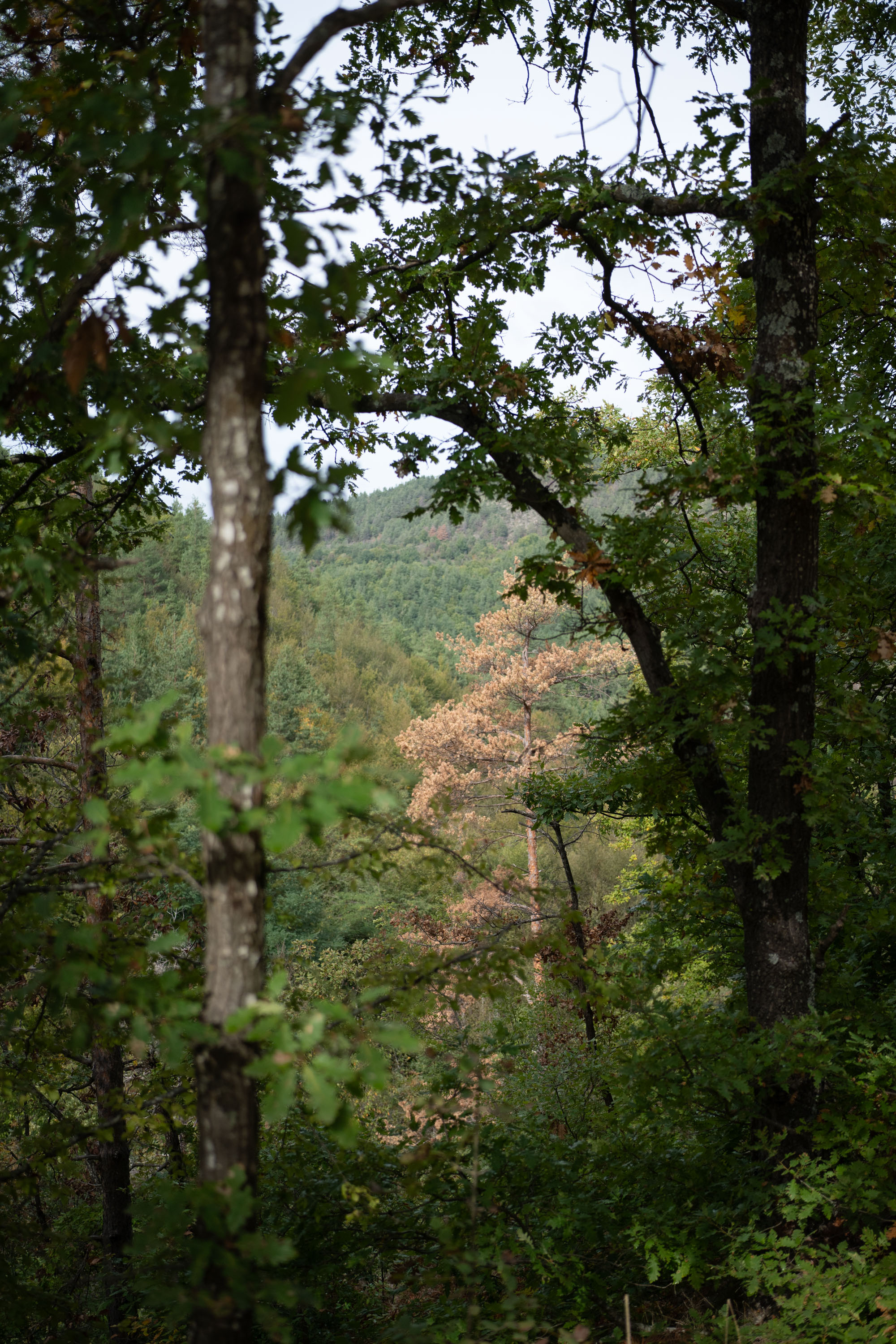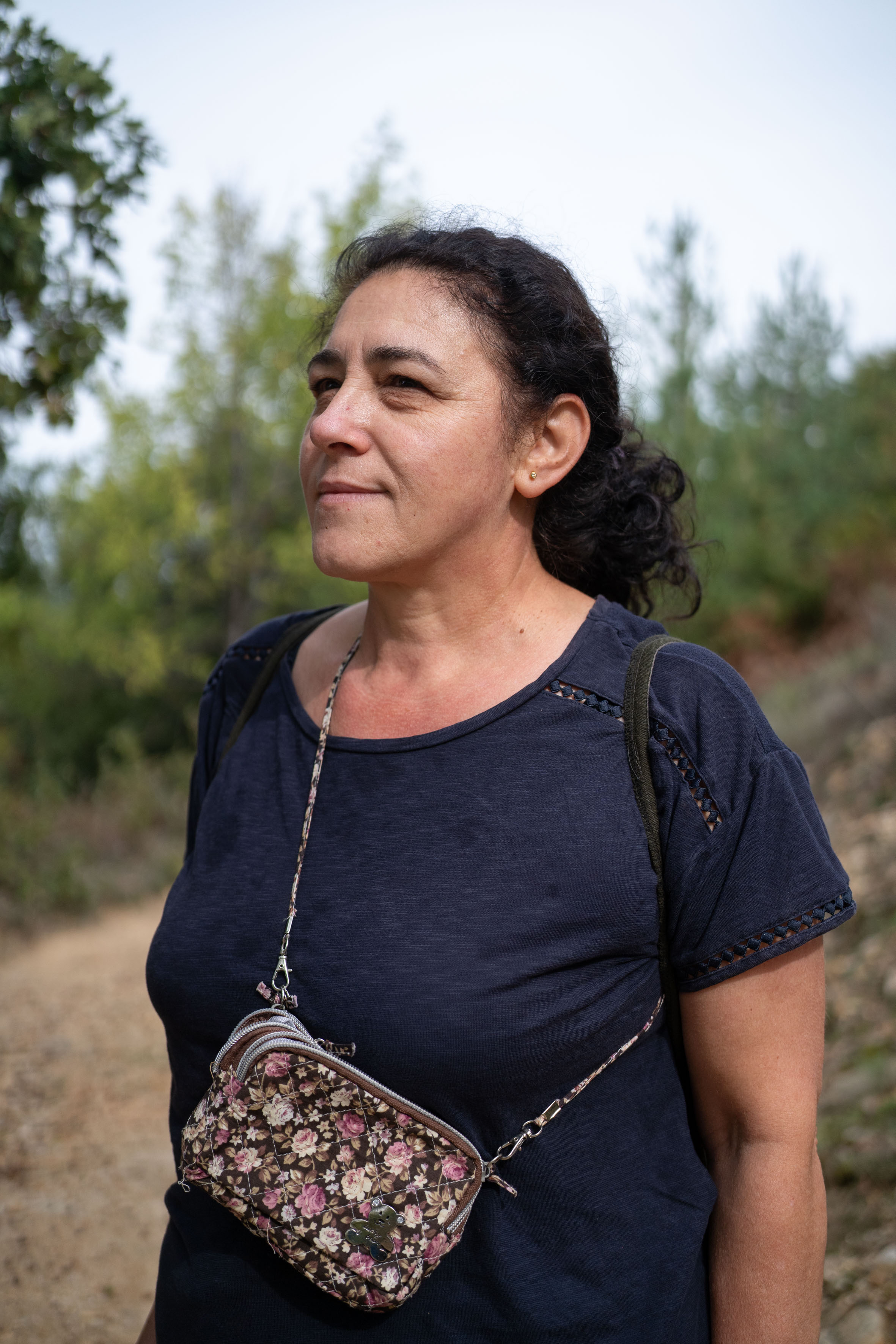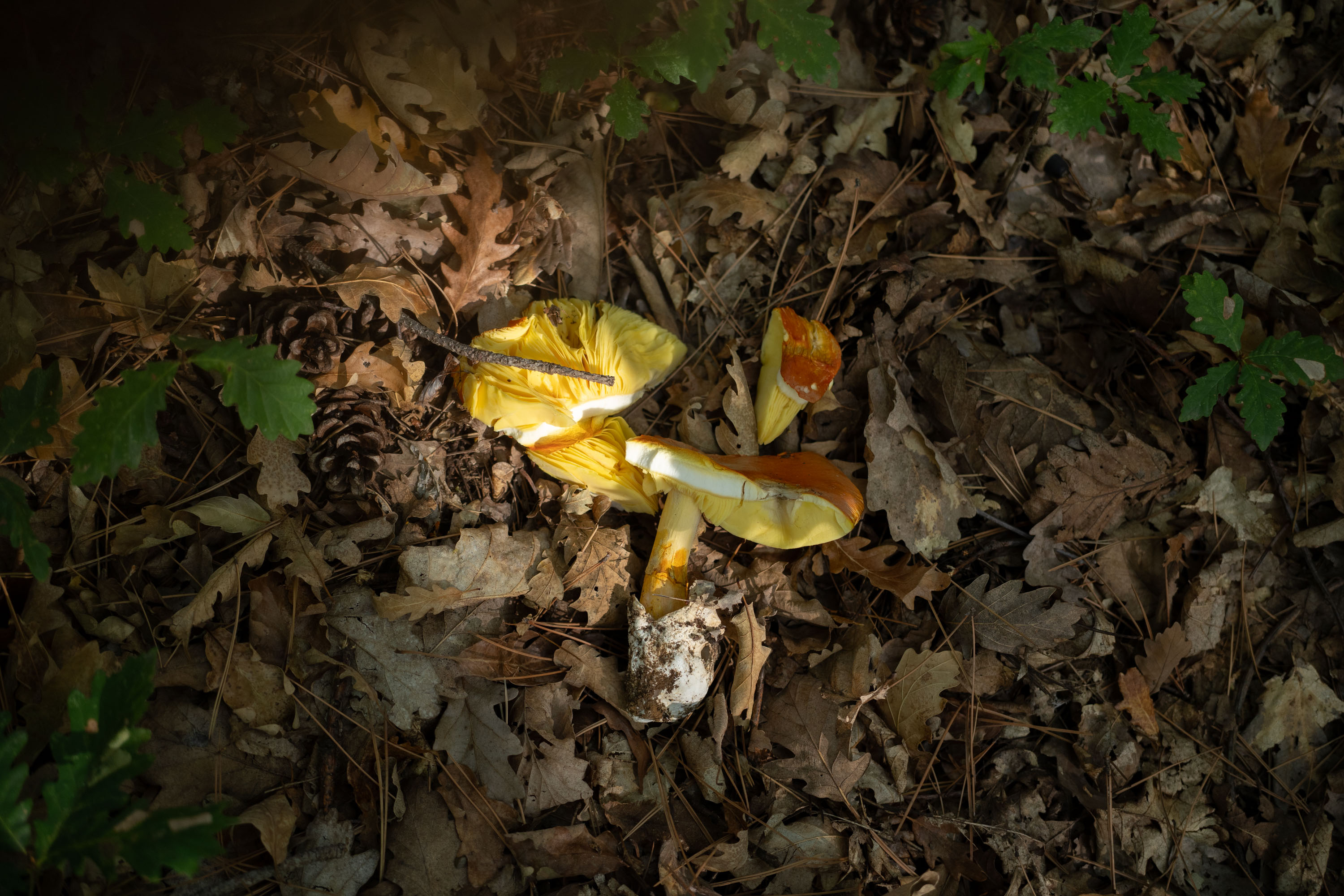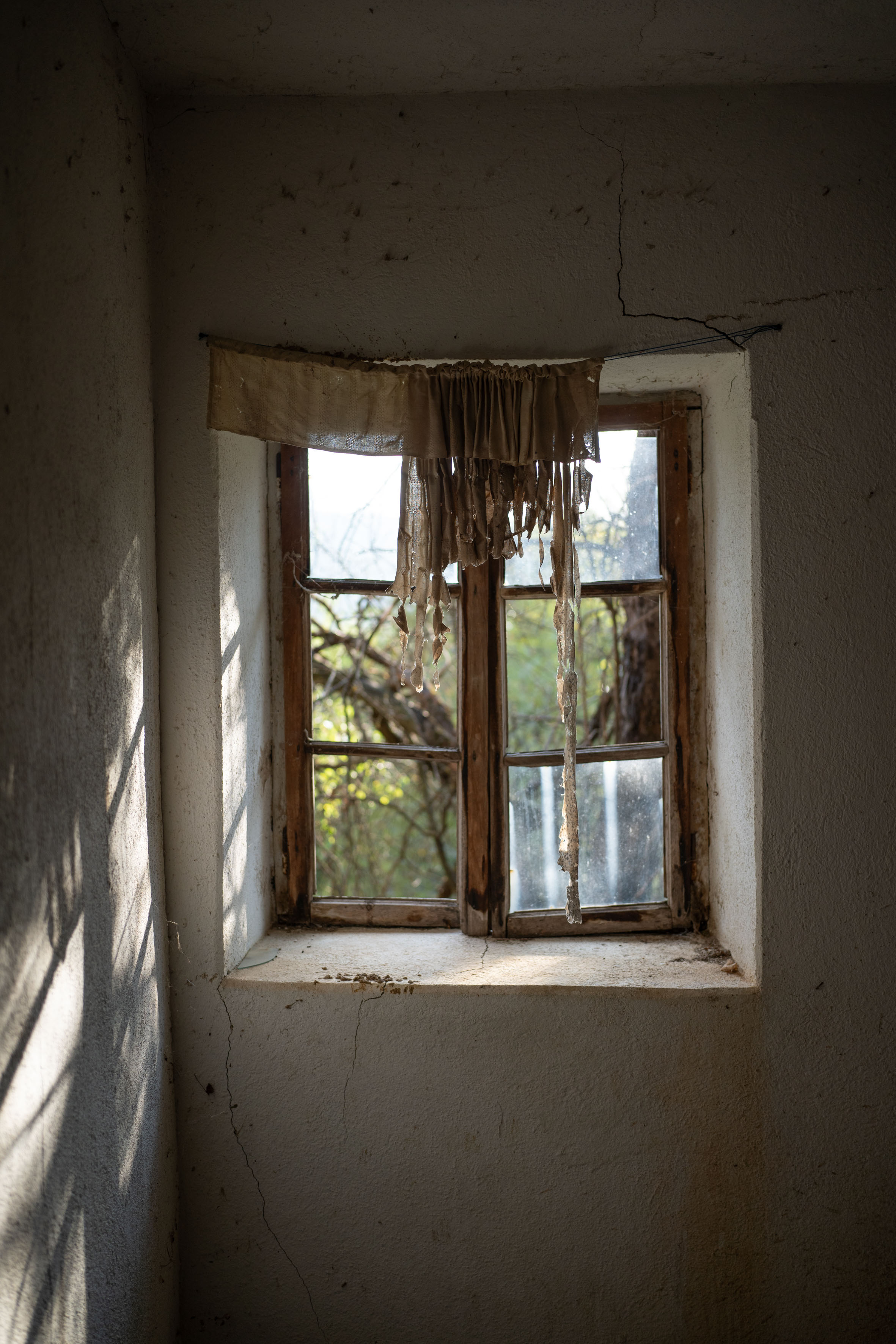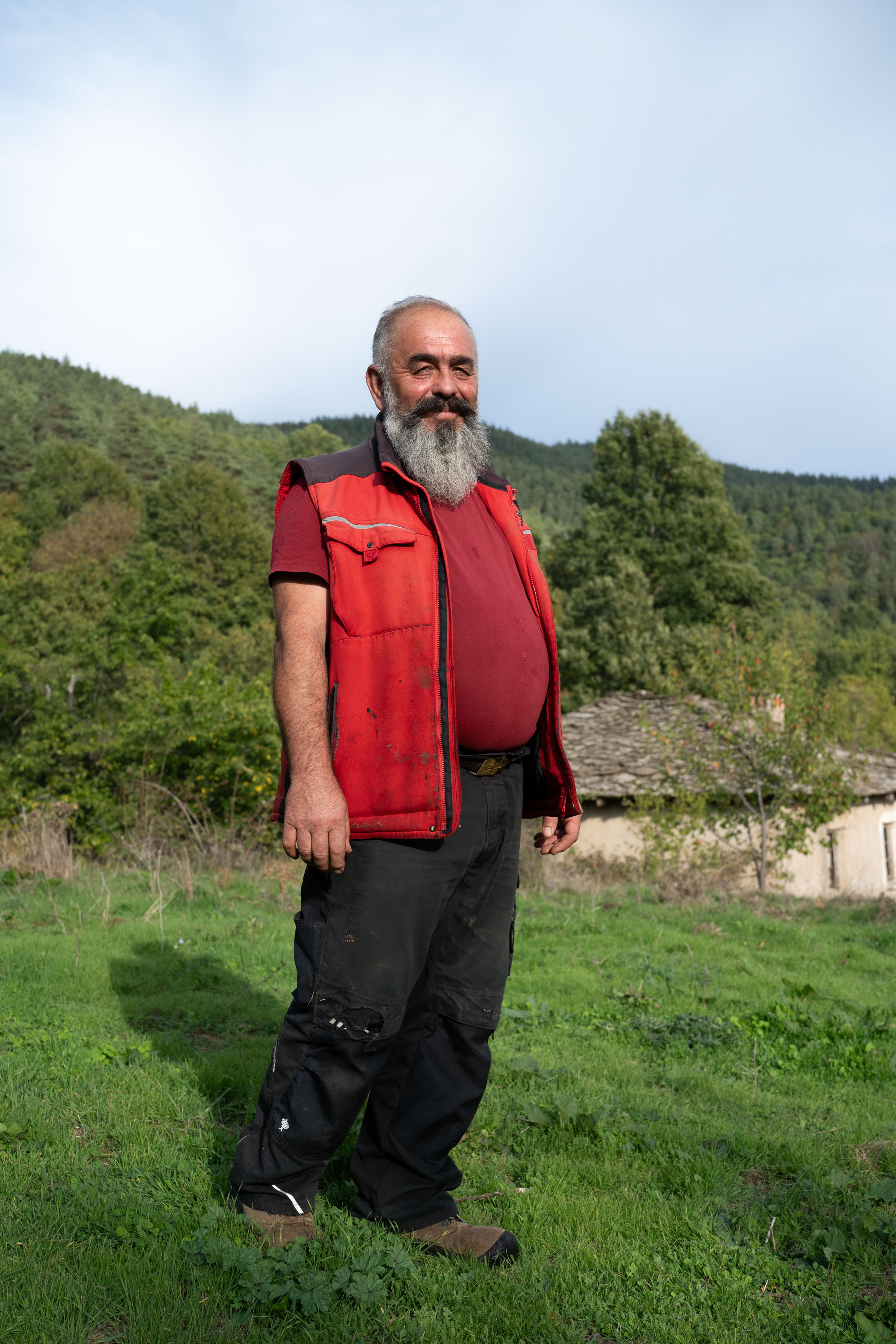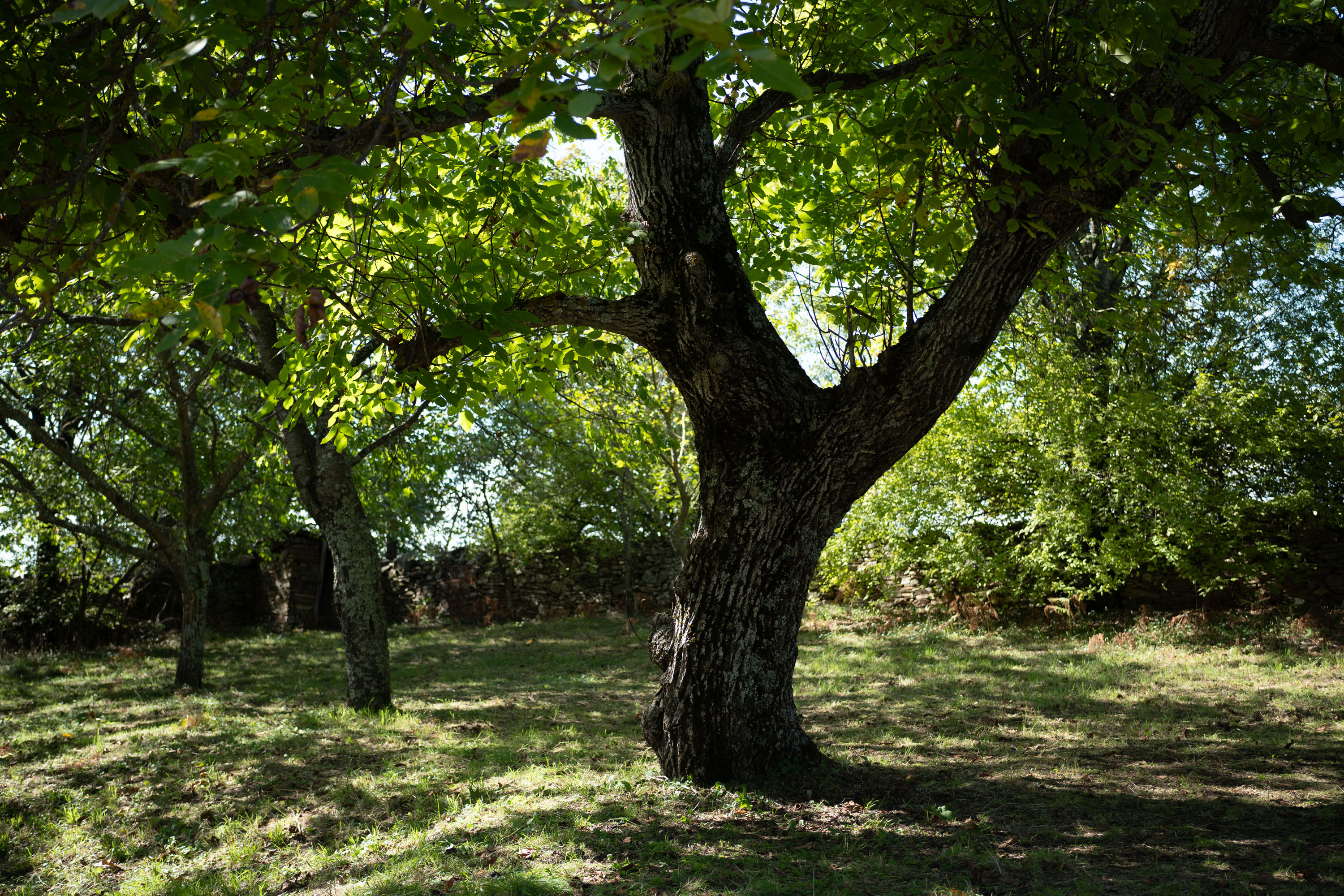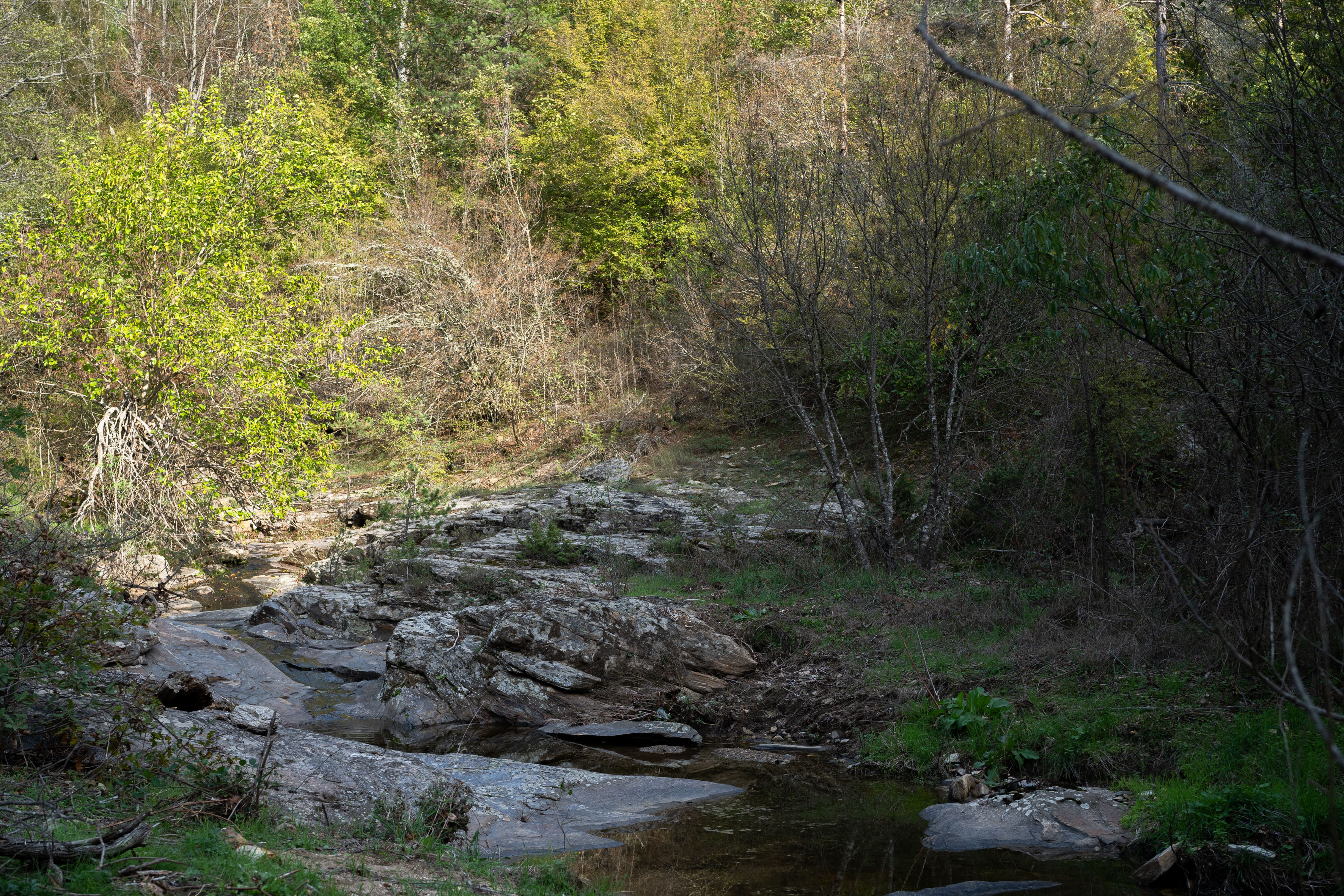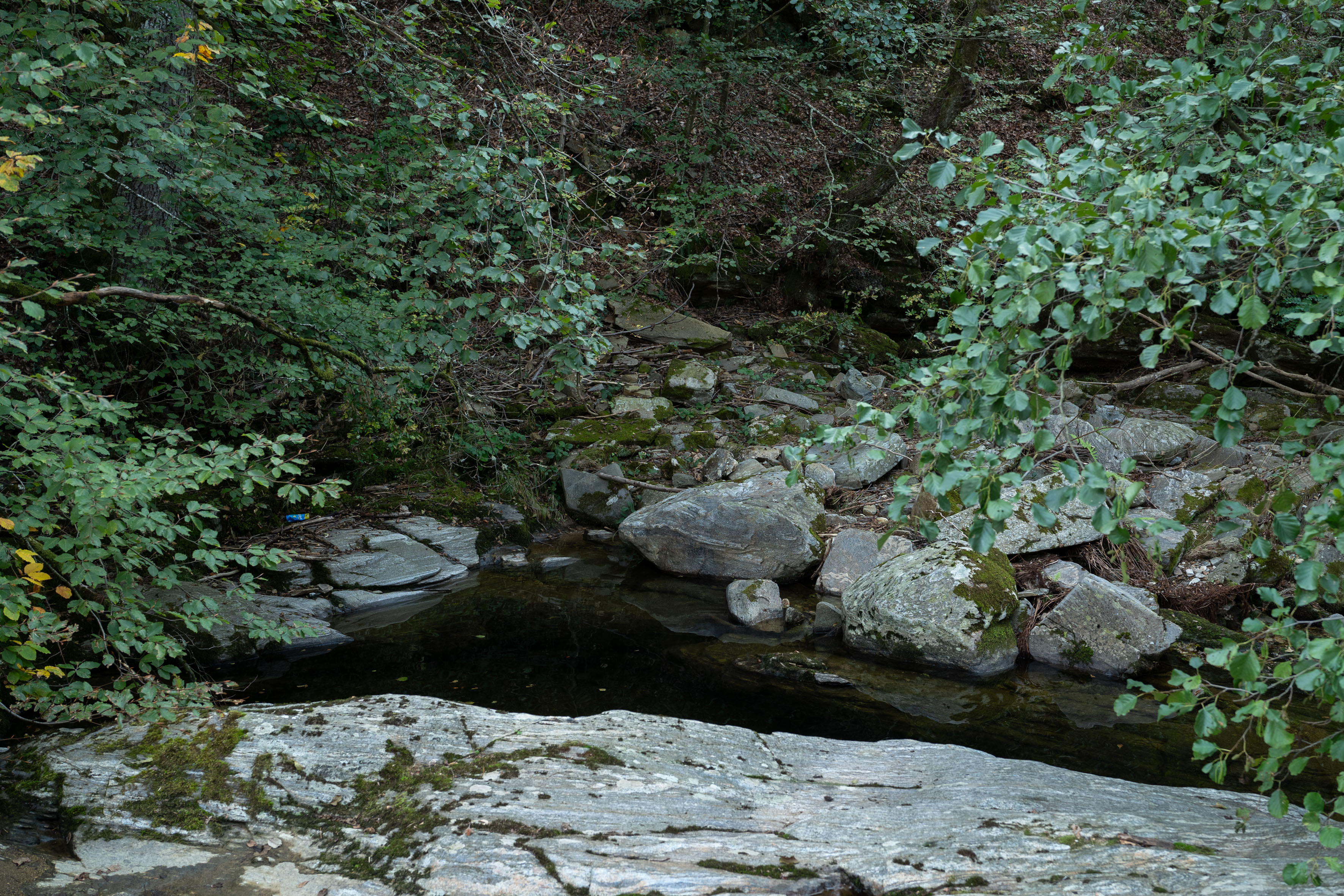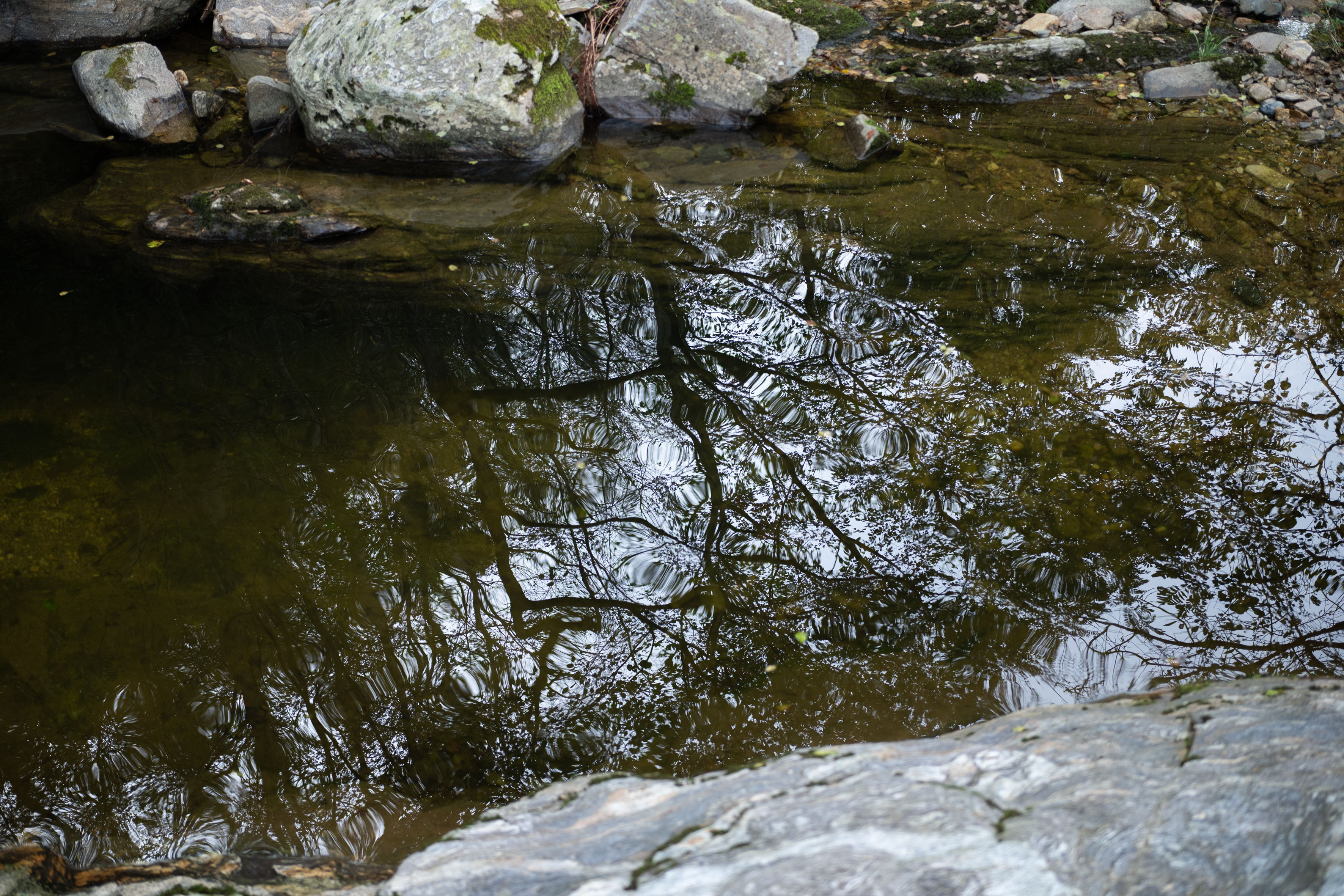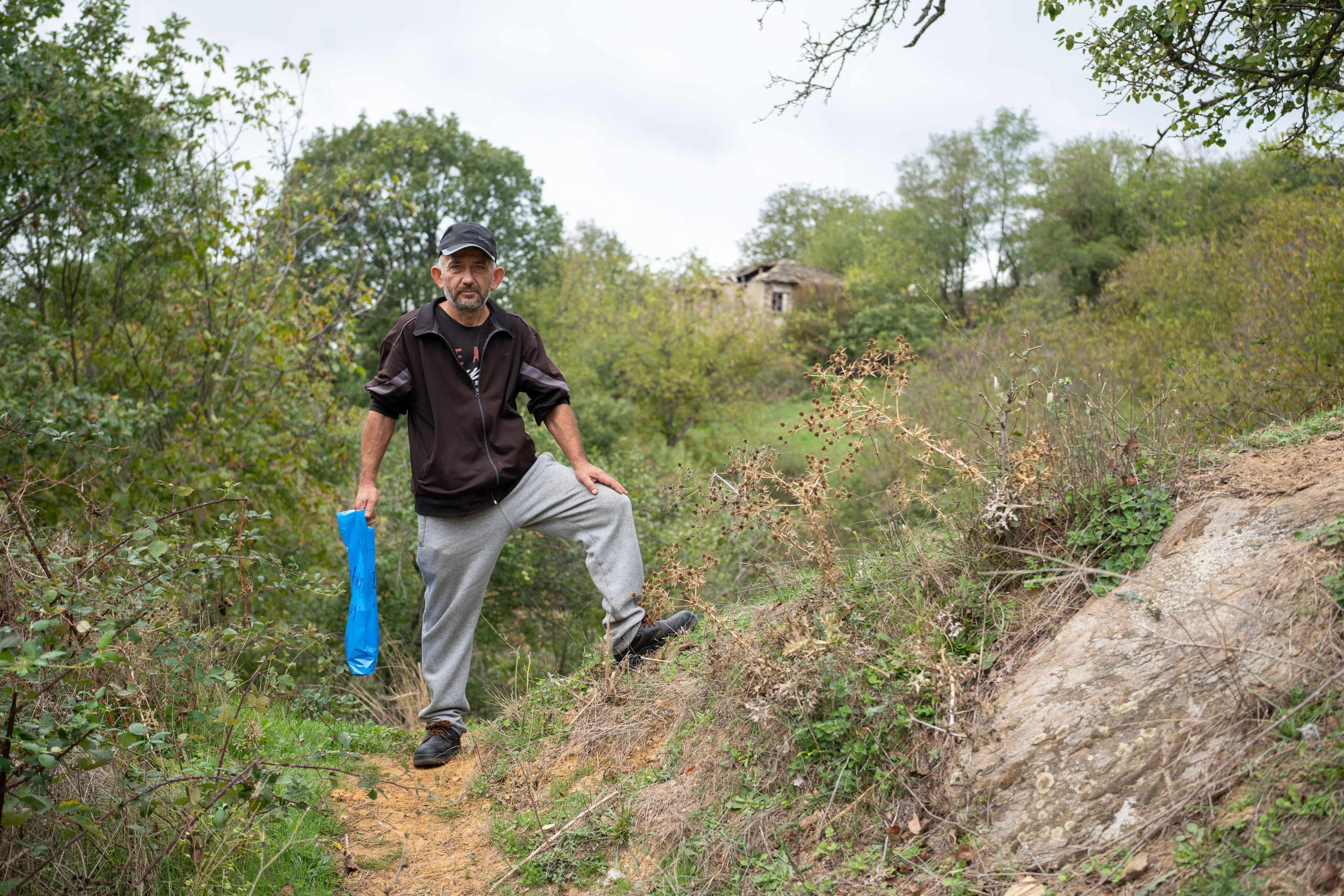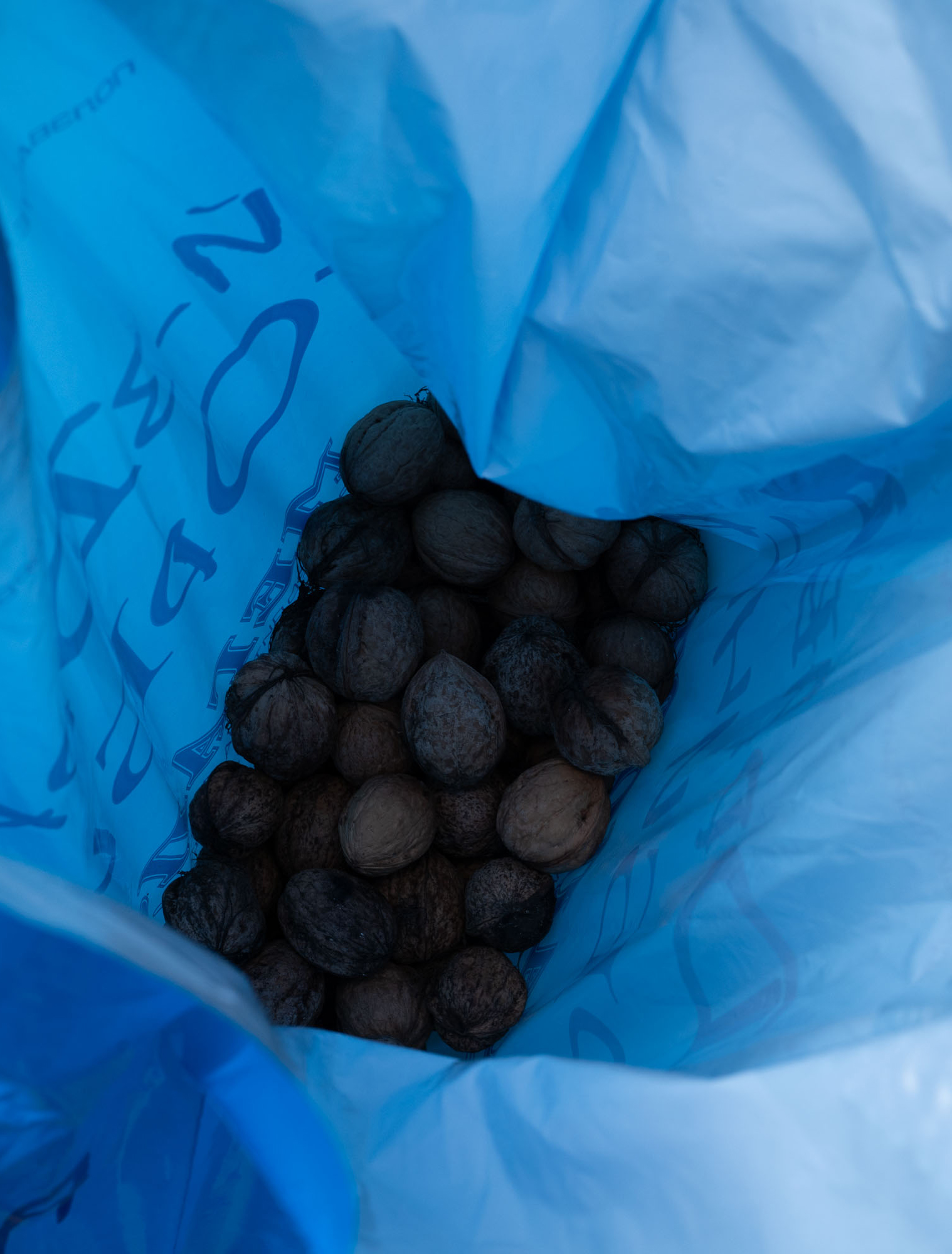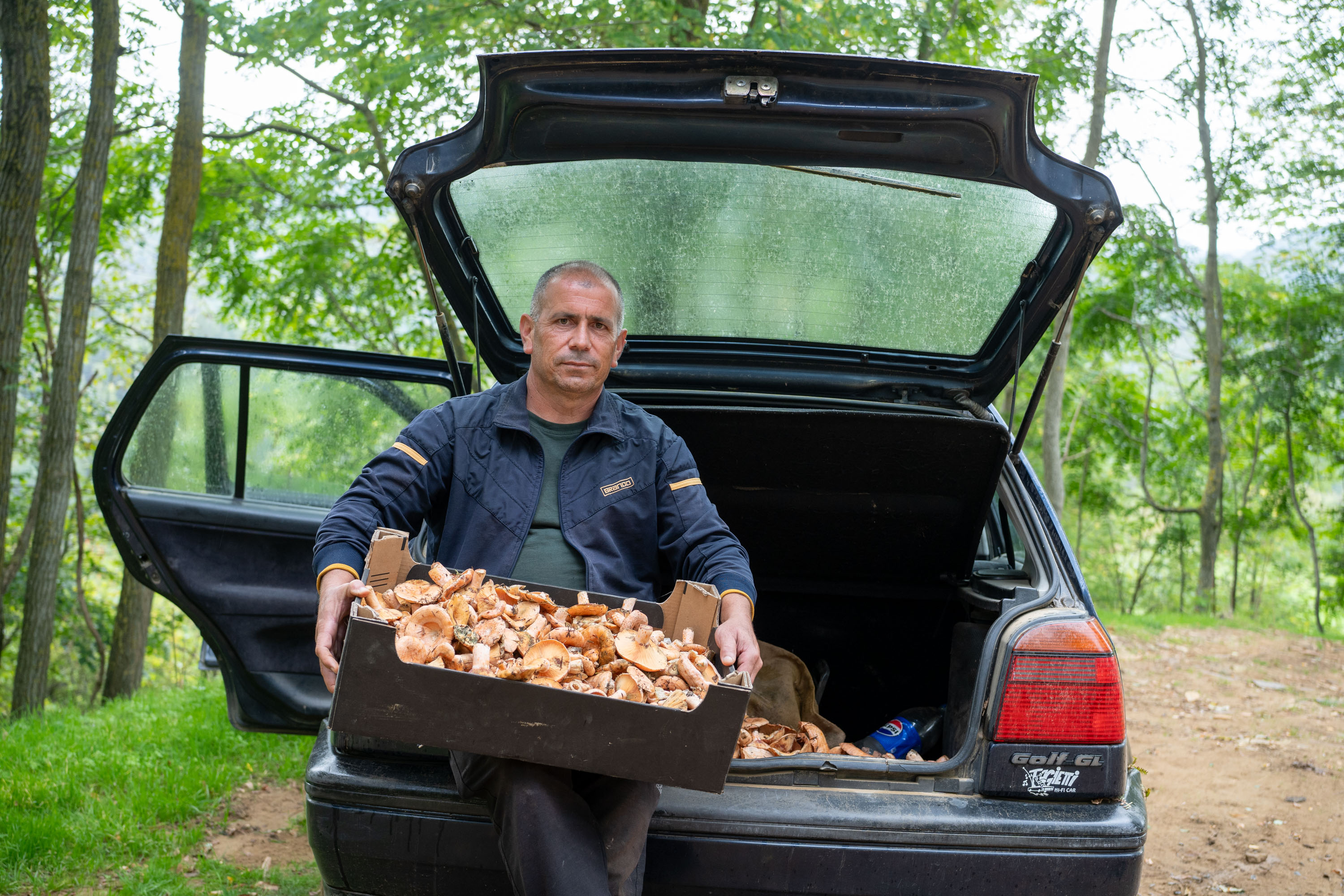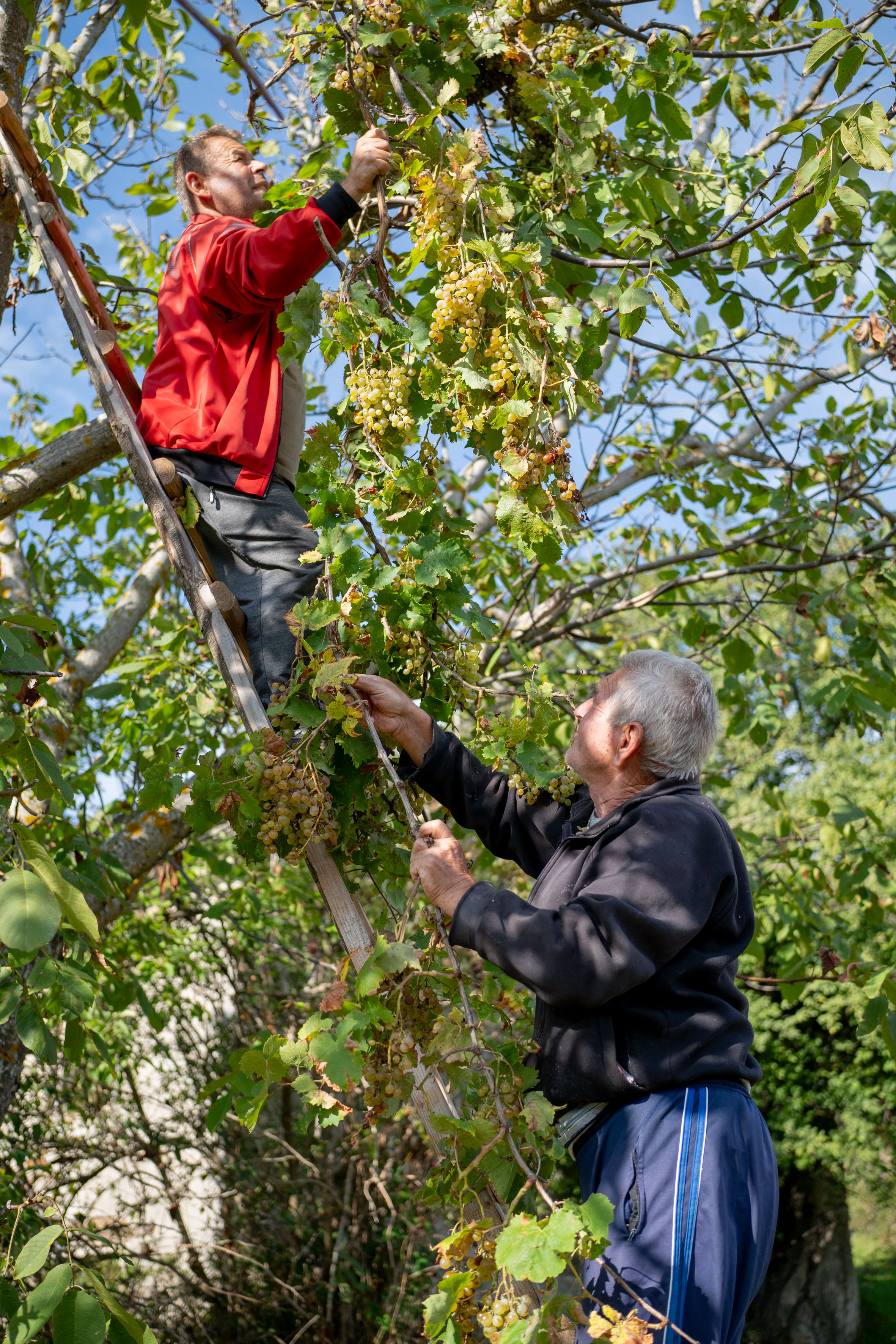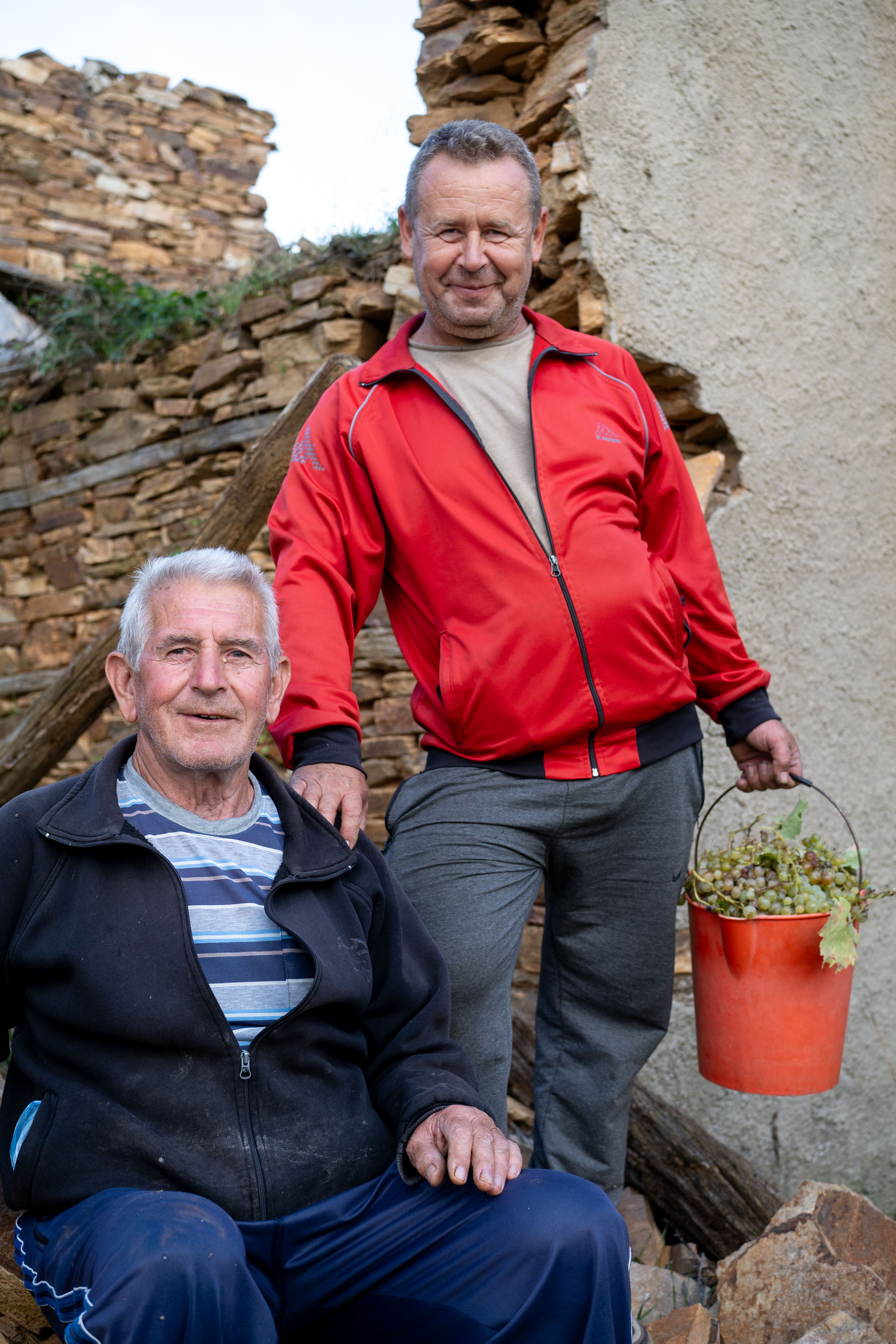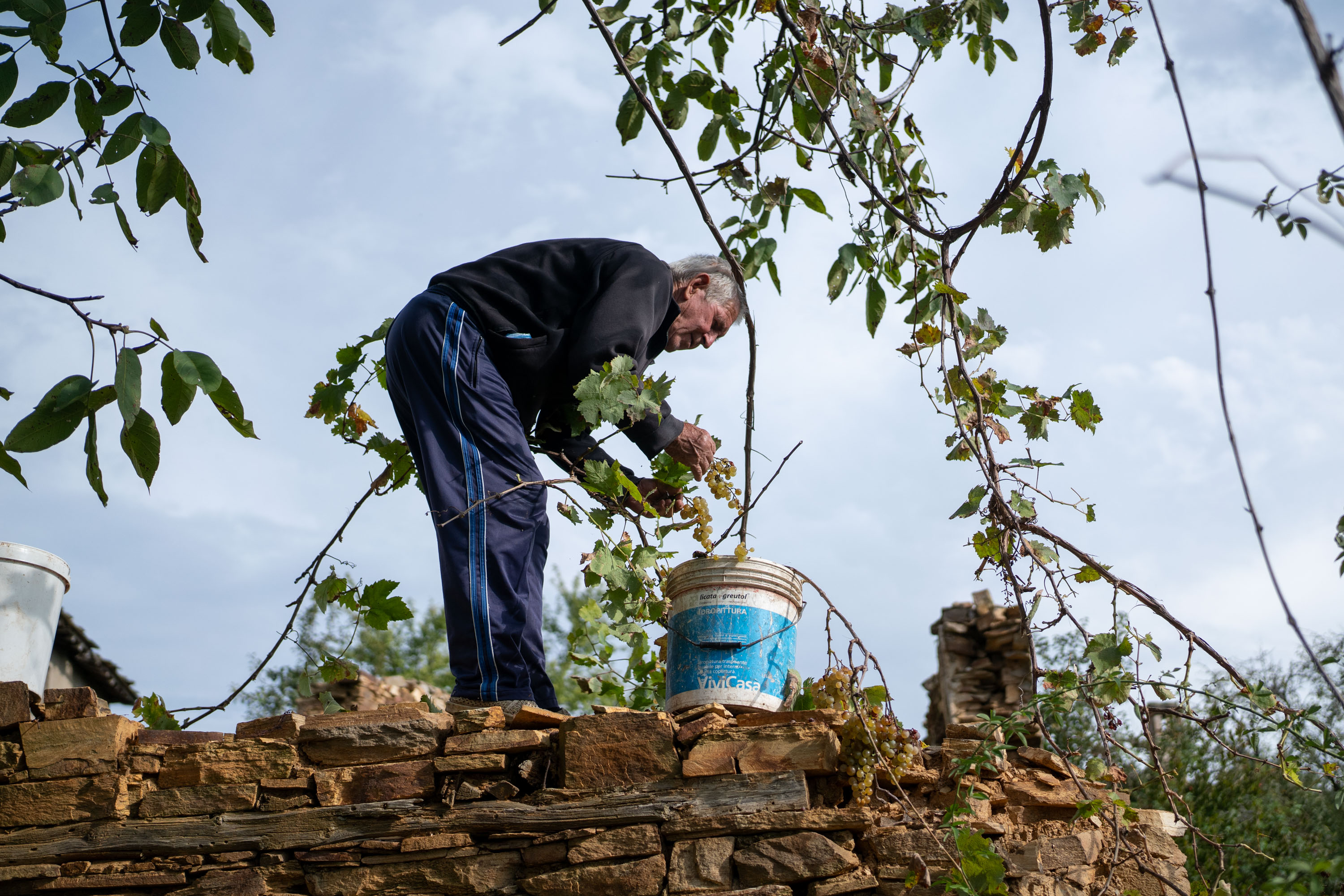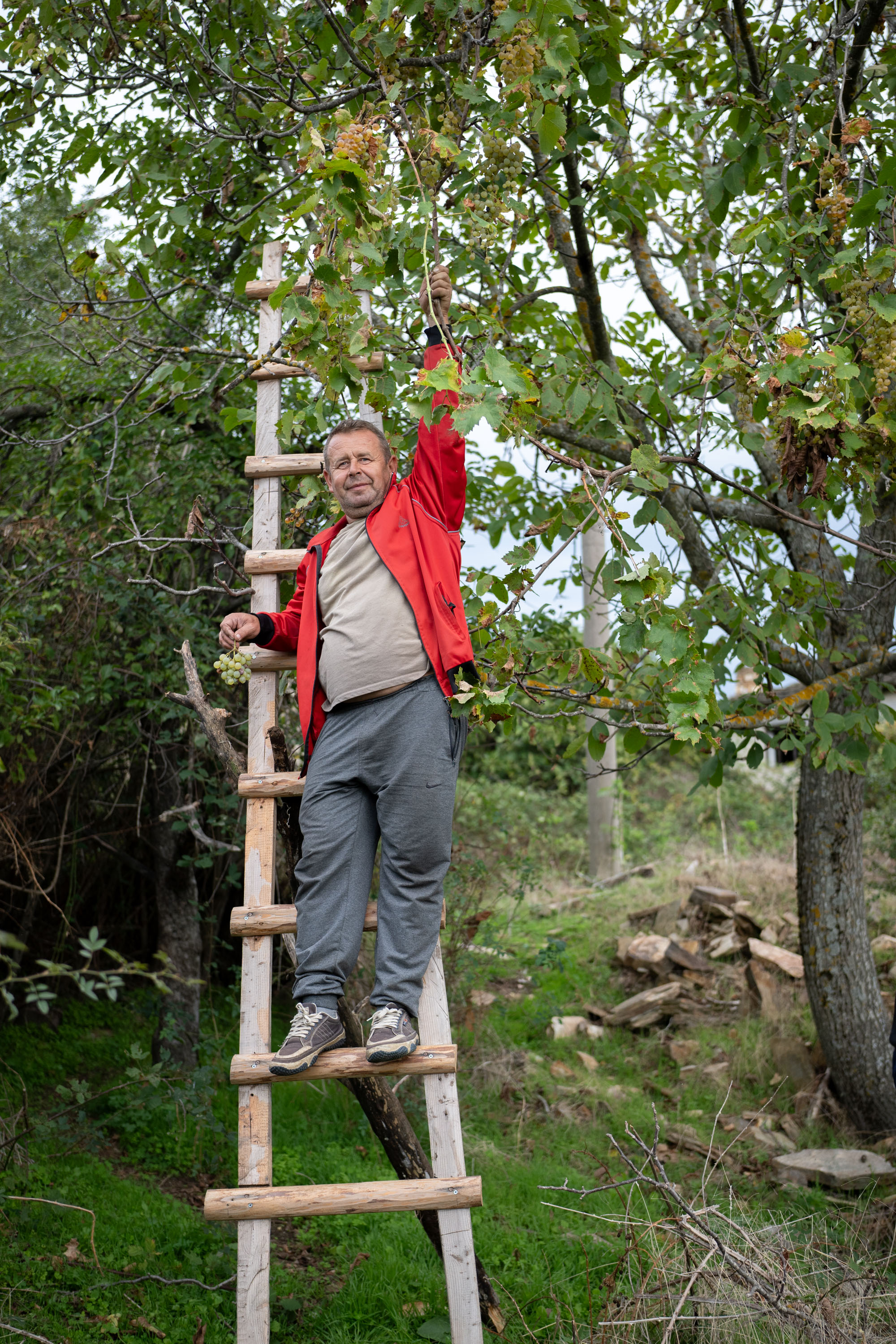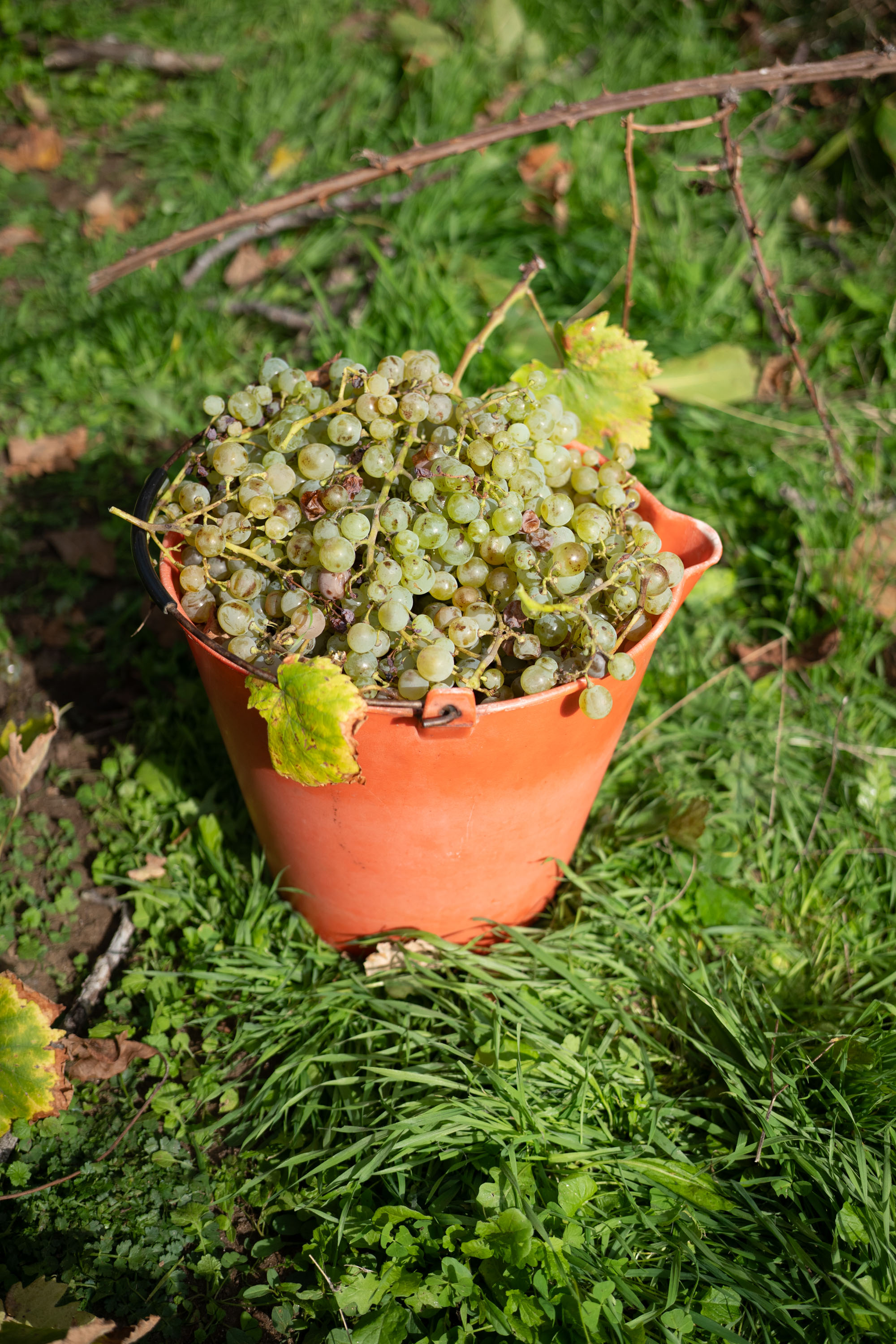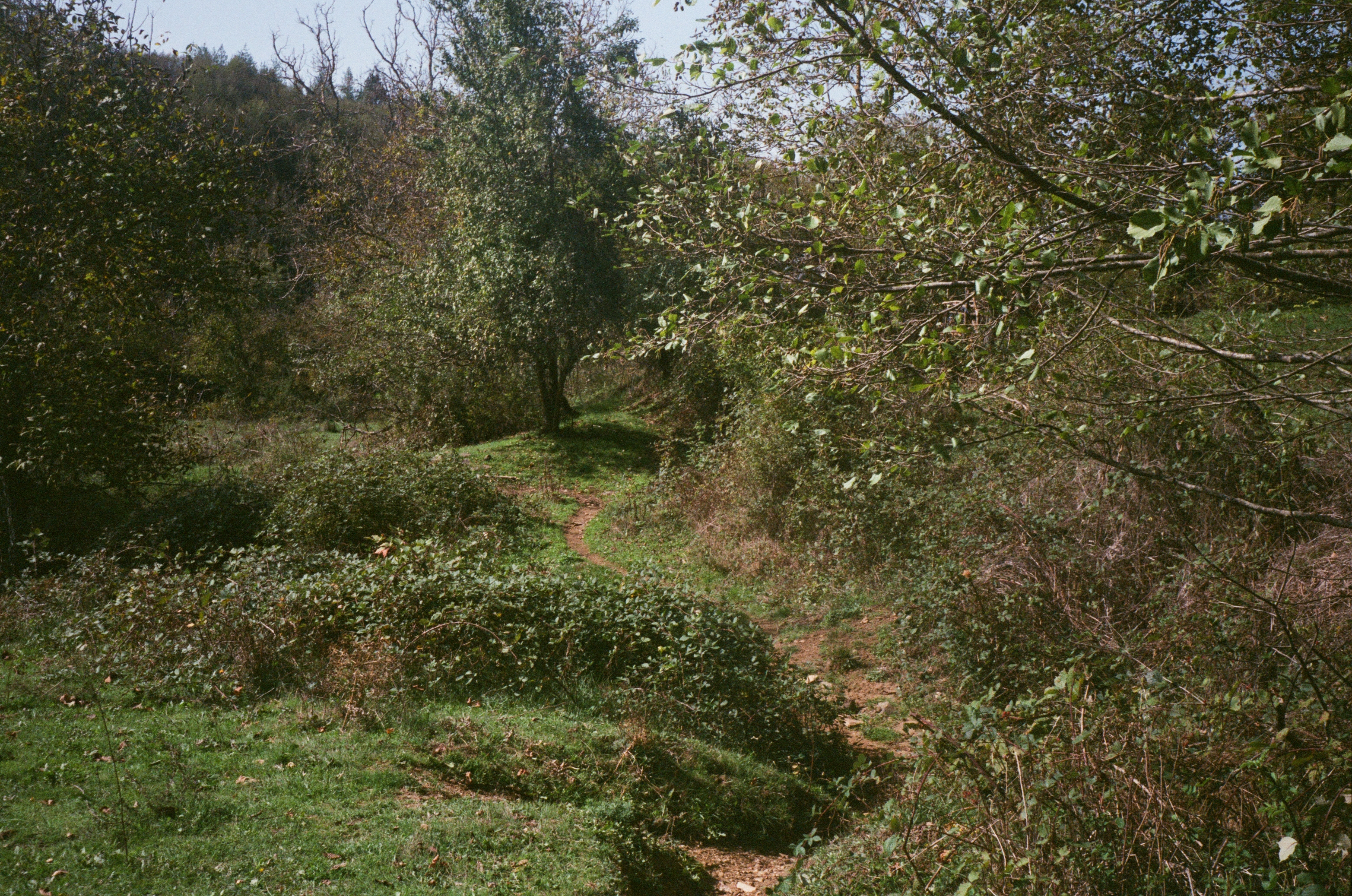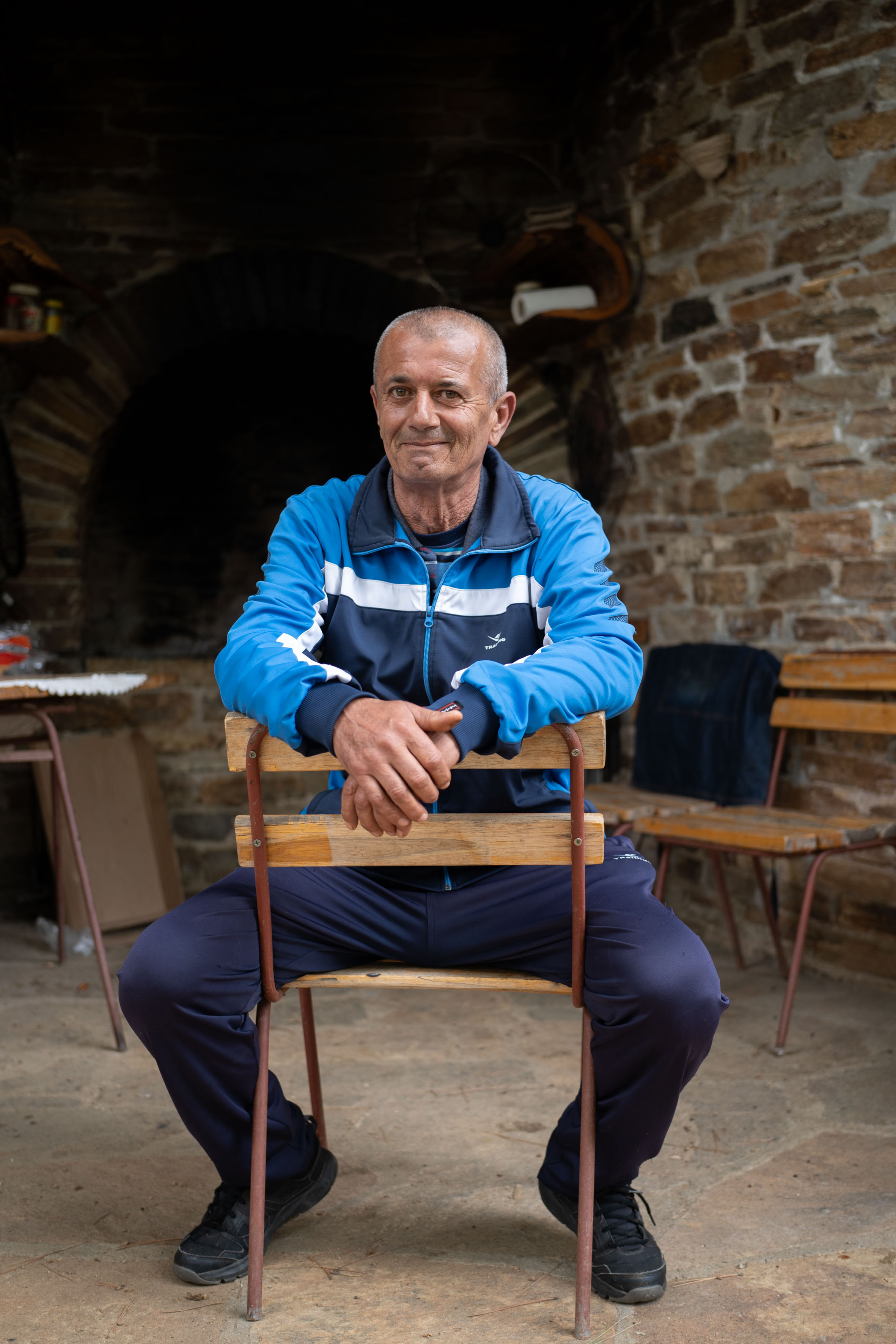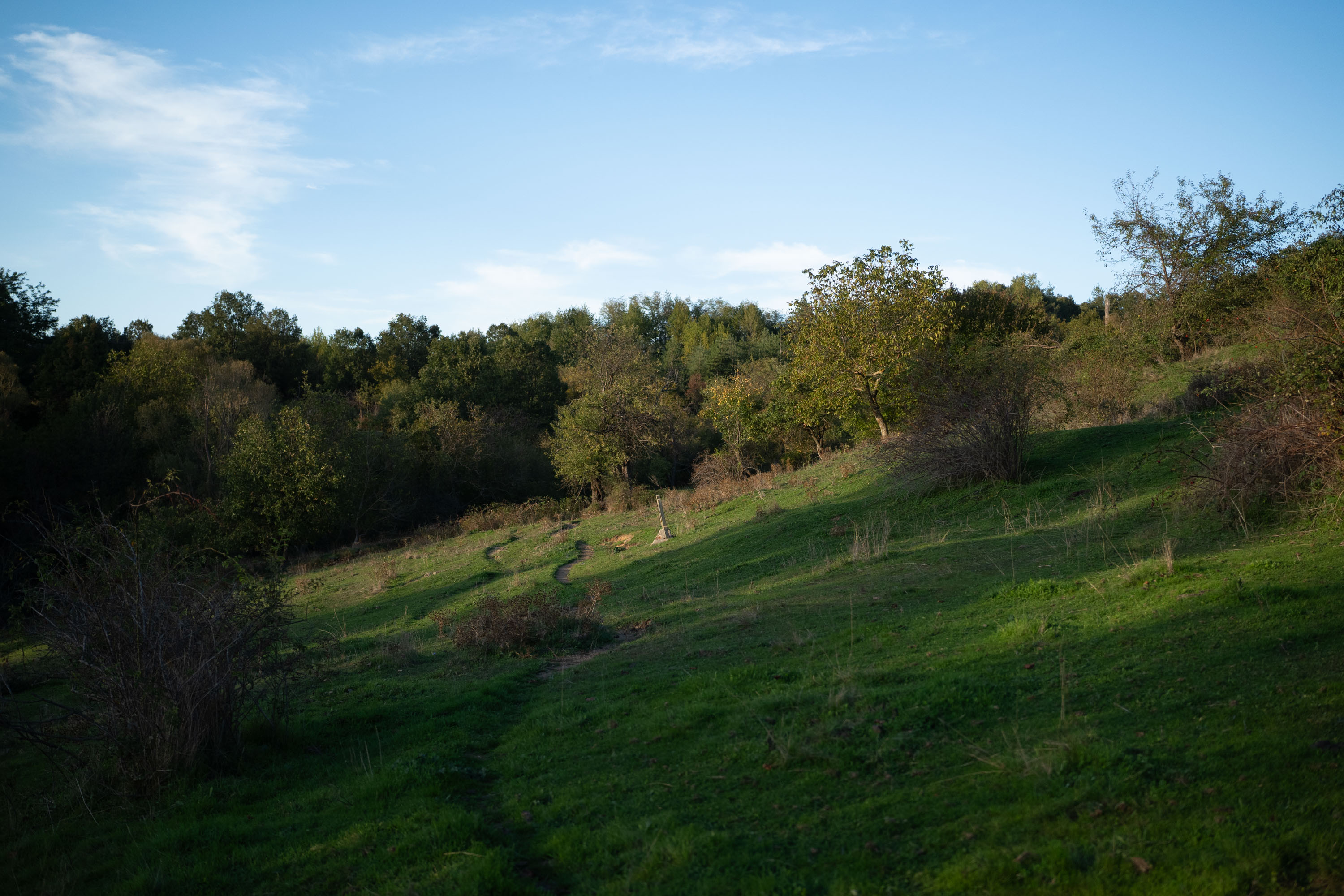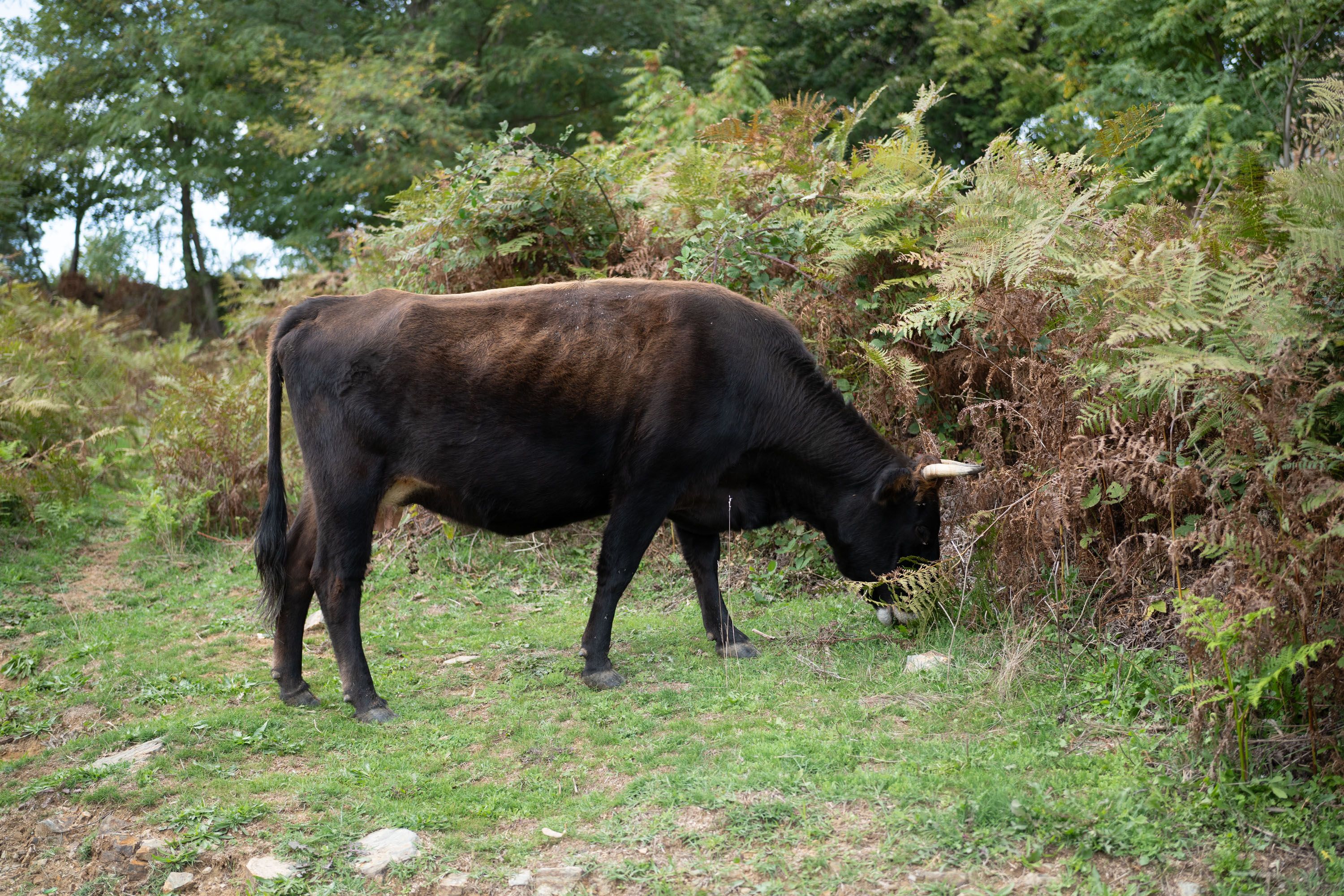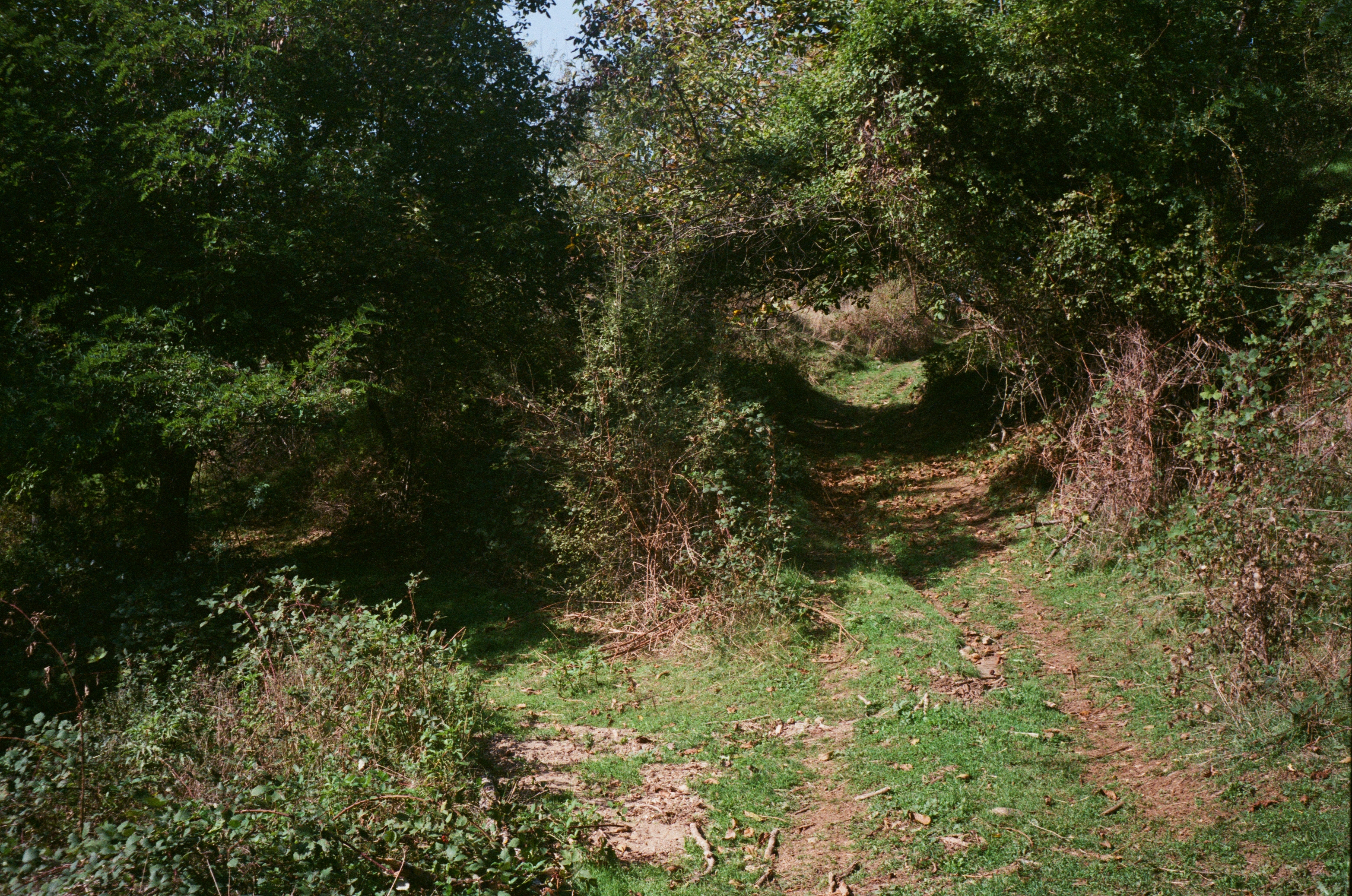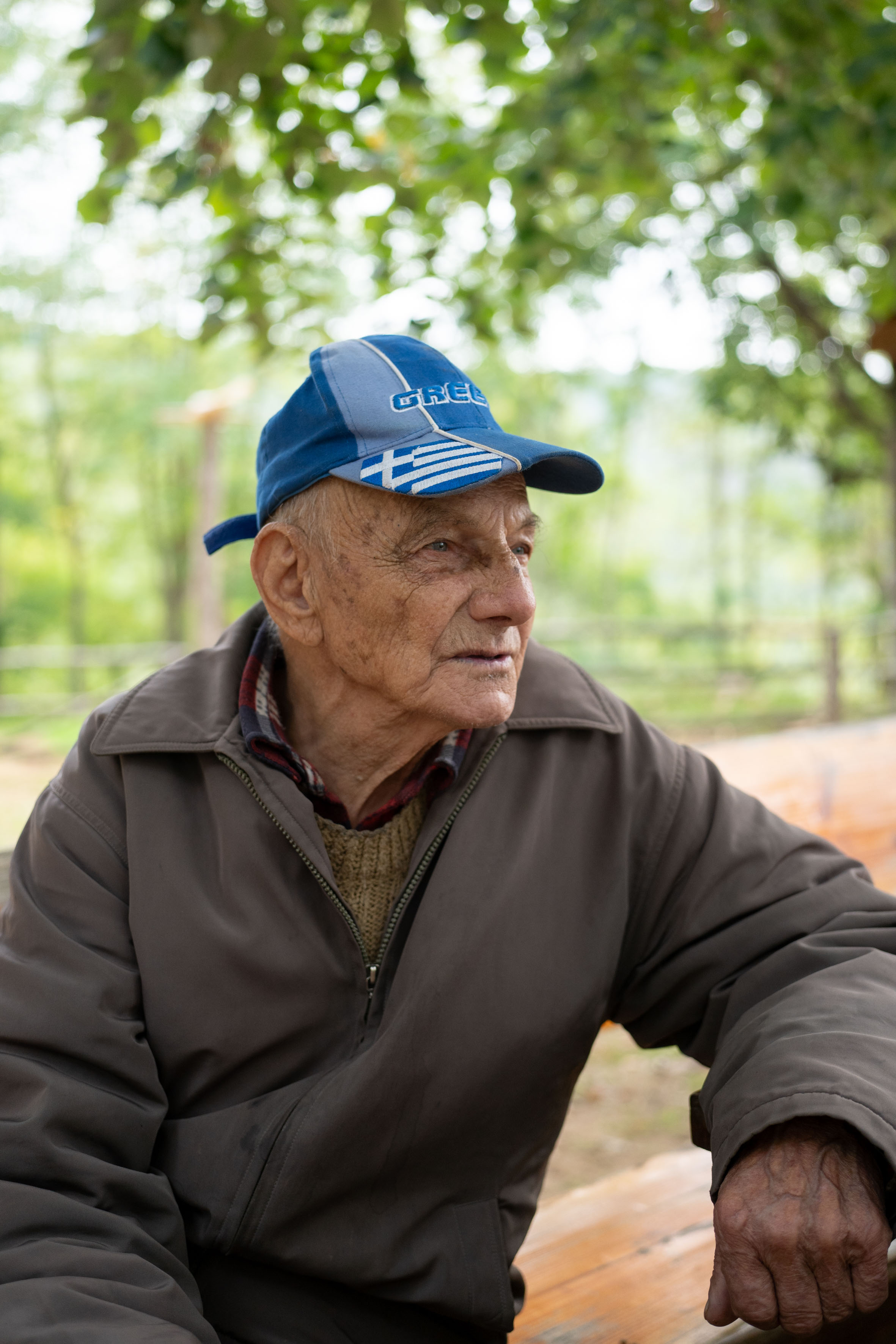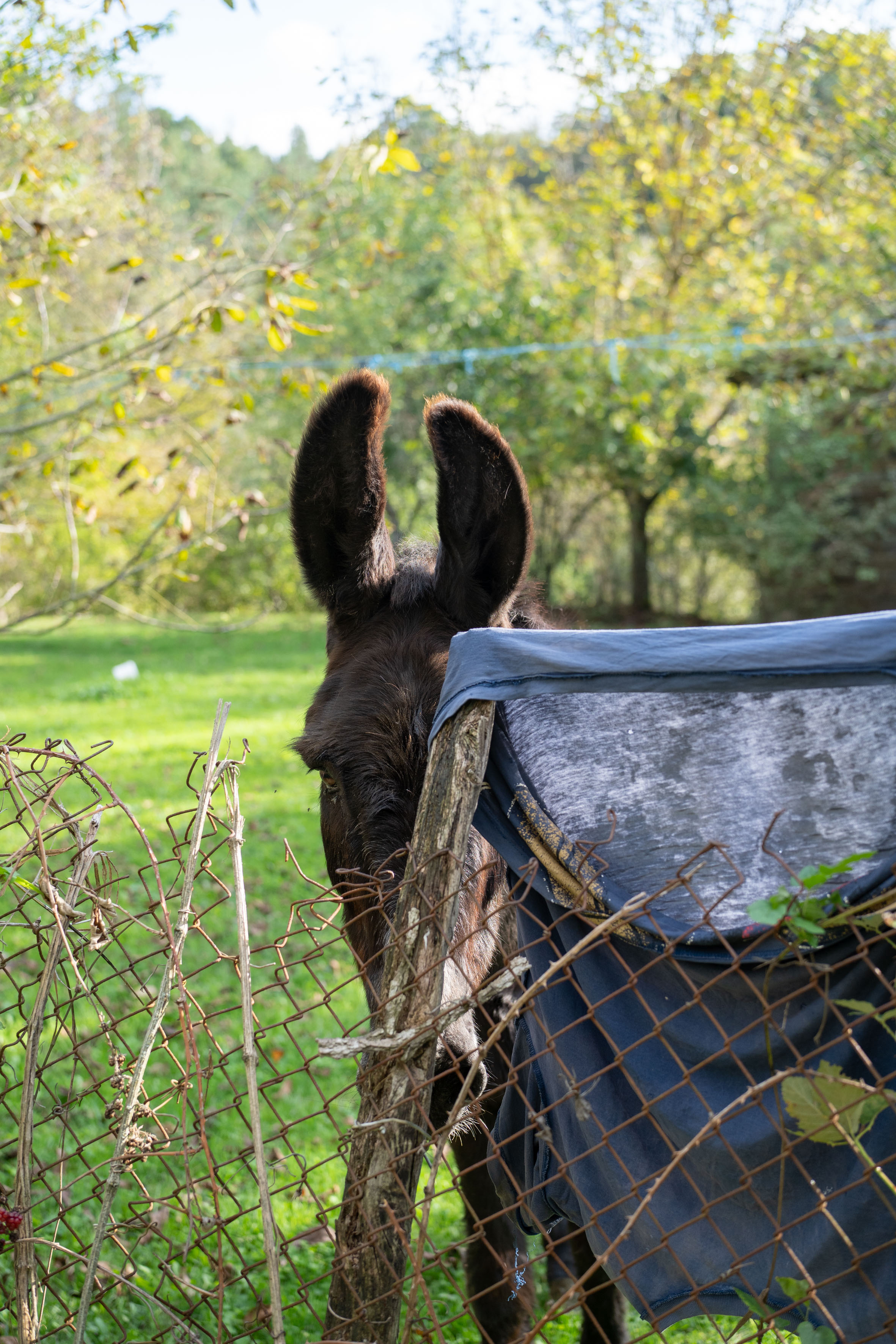Tsarino
Tsarino, Bulgaria, 2024
photography
I cross the threshold into the room and the wooden floor creaks under my feet. The smell of dirt and damp wood fills my nose. Light shines through a small window and dust dances on a sunbeam. The only sign that the room was ever occupied, is the faded curtain in front of the window. Ivo walks over and says that his mother made it. He draws the curtain aside and looks out the window.
Ivo's childhood home is in the abandoned village of Tsarino, in southern Bulgaria. A community of about fifty Muslim Bulgarian families lived here. In the late 1970s, under the communist regime, residents were forced to relocate to a neighboring village.
The photo series shows the bond between the former residents and Tsarino remains strong. They regularly return to pick grapes, collect mushrooms, or take a silent tour of the village. It is still a home for the former residents, but at the same time, it is a place that is becoming increasingly estranged from what it once was. Bit by bit, it belongs less to people and more to nature, which is slowly taking over. For me, the beauty lies in the duality of holding on to memory and embracing change.
It shows me that home can be a place where you haven’t lived in for a long time, yet still return to.
Tsarino, Bulgaria, 2024
photography
I cross the threshold into the room and the wooden floor creaks under my feet. The smell of dirt and damp wood fills my nose. Light shines through a small window and dust dances on a sunbeam. The only sign that the room was ever occupied, is the faded curtain in front of the window. Ivo walks over and says that his mother made it. He draws the curtain aside and looks out the window.
Ivo's childhood home is in the abandoned village of Tsarino, in southern Bulgaria. A community of about fifty Muslim Bulgarian families lived here. In the late 1970s, under the communist regime, residents were forced to relocate to a neighboring village.
The photo series shows the bond between the former residents and Tsarino remains strong. They regularly return to pick grapes, collect mushrooms, or take a silent tour of the village. It is still a home for the former residents, but at the same time, it is a place that is becoming increasingly estranged from what it once was. Bit by bit, it belongs less to people and more to nature, which is slowly taking over. For me, the beauty lies in the duality of holding on to memory and embracing change.
It shows me that home can be a place where you haven’t lived in for a long time, yet still return to.
